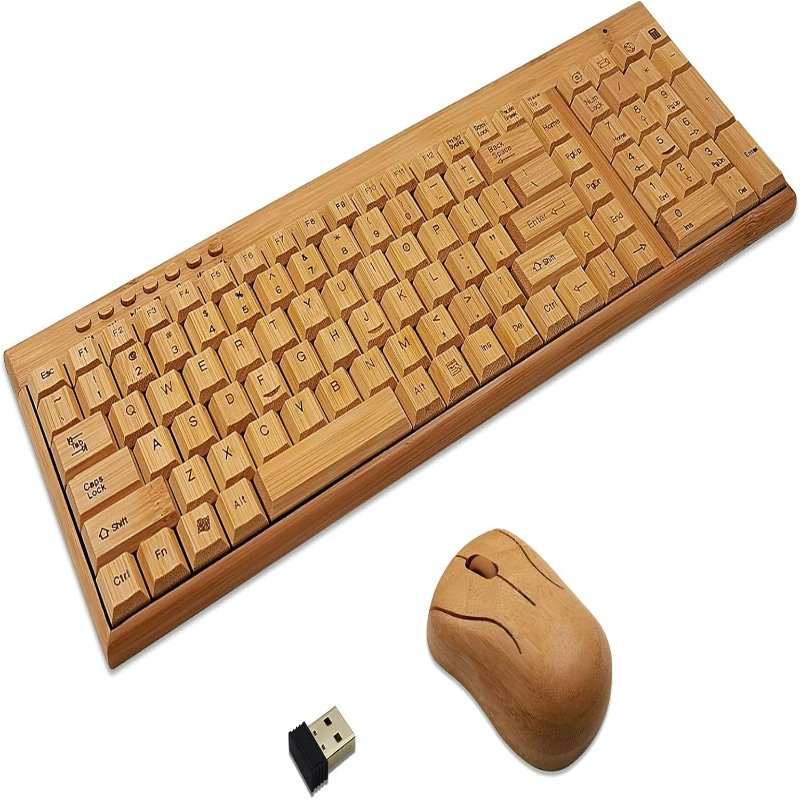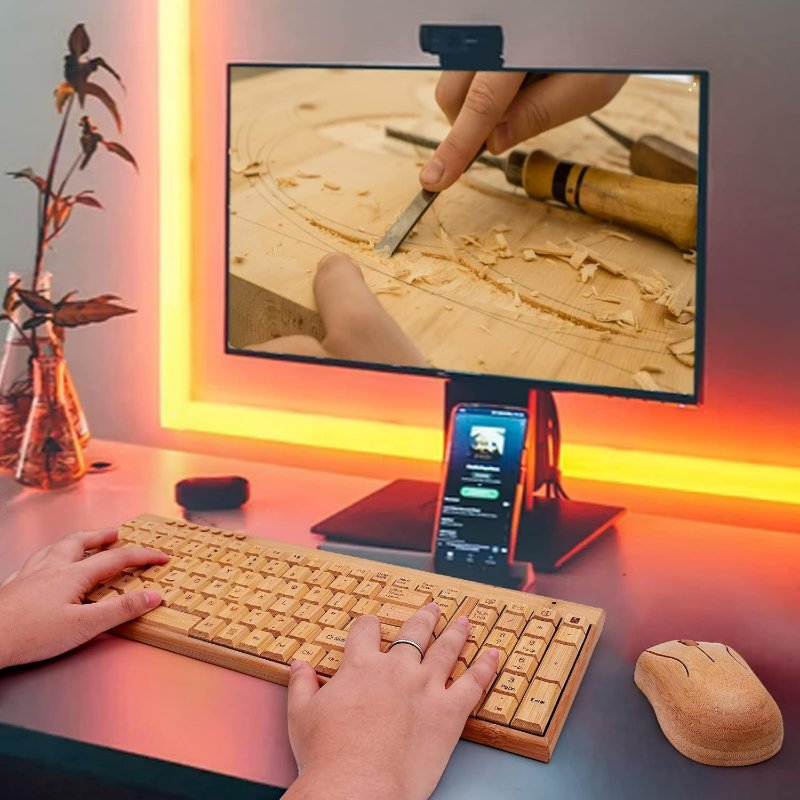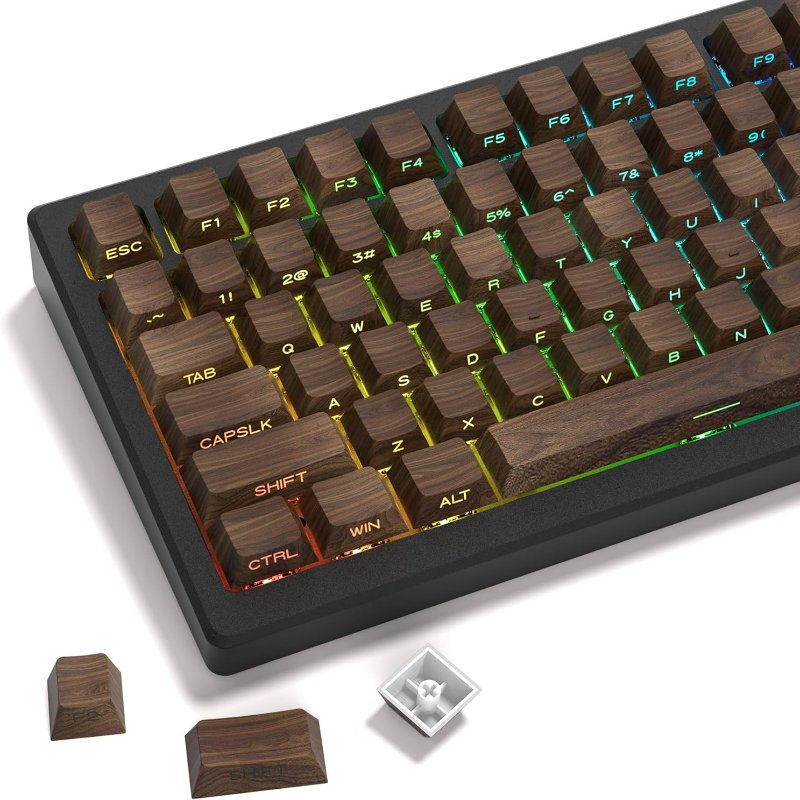In the ever-evolving landscape of gaming, where immersive experiences and cutting-edge technology dominate discussions, a new trend is emerging that’s both eco-conscious and player-friendly: sustainable gaming, exemplified by the rise of wooden keyboards. As traditional gaming equipment contributes significantly to electronic waste and environmental degradation, a paradigm shift toward sustainability is not just welcome—it is essential. This article will explore how wooden keyboard is revolutionizing the gaming experience while providing insights into the broader implications of sustainability in the gaming industry.
The Environmental Impact of Traditional Gaming Equipment
The gaming industry has witnessed quick growth over the past few decades, with millions of gamers globally investing in high-tech devices that often come with a hefty environmental price tag. Traditional gaming peripherals—such as keyboards, mice, and headsets—are typically manufactured from plastic and other non-renewable materials. This production process results in high carbon emissions, and the disposal of these peripherals compounds the problem, contributing to an estimated 50 million tons of e-waste generated worldwide each year.
When we consider the lifecycle of conventional gaming equipment, it becomes apparent that the consequences extend beyond the immediate gaming experience. The sourcing of materials, the manufacturing processes, transportation, and the eventual discard of products all carry carbon footprints that are often invisible to consumers yet glaringly impactful on the planet. This environmental cost is increasingly at odds with the values of a younger, more eco-conscious generation of gamers—those who demand products that align with their commitment to sustainability.

What Sets Wooden Keyboards Apart in Gaming
Wooden keyboards, unlike their plastic counterparts, set a new standard for sustainable gaming accessories. These keyboards often use sustainably sourced hardwoods, which not only minimizes environmental harm but also provides a unique aesthetic that blends seamlessly into gamers’ setups. The tactile experience of a wooden keyboard is different as well; the natural resonance of wood can enhance sound and feedback, offering players a more tactile engagement with their gear.
Moreover, wooden keyboards are marked by their durability. While plastic can wear down, chip, or become discolored, high-quality wood offers a resilience that can withstand the wear and tear of daily use. An attractive benefit of wooden keyboards is their potential longevity, allowing them to serve gamers for years, if not decades. When users choose well-crafted wooden peripherals, they invest in products that can outlast traditional gaming gear, ultimately promoting a frugal use of resources and minimizing waste—key tenets of sustainability.
The Rise of Eco-Conscious Consumers in Gaming
The gaming community is experiencing a significant shift in consumer behavior toward environmental consciousness. Modern gamers, particularly millennials and Generation Z, are advocating for products that not only enhance their experience but also align with their values. This eco-awareness is reshaping how companies develop and market their gaming accessories.
As a result, brands that prioritize sustainability often find themselves resonating more deeply with their target demographics. Scenarios where consumers specifically seek out brands that incorporate eco-friendly materials, such as wooden keyboards, are increasingly prevalent. Businesses that tap into this demand can build a loyal customer base that appreciates not only the product quality but also the ethical considerations driving its production. Gamers today are more informed about the impact of their purchases, and their preferences signal a momentous shift in market dynamics, urging manufacturers to adapt or risk obsolescence.

Innovations in Wooden Keyboard Design and Functionality
Innovation within wooden keyboard design is fetching significant attention from gamers and tech aficionados alike. Several brands have tapped into the unique properties of wood to create products that are both aesthetically pleasing and functionally superior. Different types of woods—such as maple, walnut, and bamboo—are being chosen for their individual qualities, allowing for custom designs that cater to both visual preferences and gaming performance.
Beyond aesthetic appeal, innovations still preserve high-functionality standards. For example, many wooden keyboards feature customizable keys, programmable macros, and various switch types, demonstrating that green design and high performance do not have to be mutually exclusive. The resurgence of wooden keyboards showcases woodworking techniques that can be seamlessly integrated into high-tech devices.
Moreover, incorporating materials like wood allows for impressive design possibilities. Manufacturers are experimenting with finishes and textures, introducing unique grain patterns that make every keyboard distinct. Such distinctiveness not only creates an immersive gaming environment but also allows players to feel more personally connected to their setup—a factor that can enhance the emotional experience of gaming.
The Emotional and Psychological Connection to Sustainable Gaming
In recent years, the emotional landscape of gaming has expanded to encompass deeper connections not only with the game but also with the accessories that players use. Sustainable gaming, characterized by environmentally-friendly equipment such as wooden keyboards, plays into this psychological connection. Gamers who know they are using products that contribute to environmental sustainability may find an added layer of satisfaction in their gaming experiences.
Cognitive science suggests that tangible connections, such as the feeling of a wooden keyboard under one’s fingers, amplify immersive experiences. The sensory engagement provided by natural materials can trigger emotional responses and contribute to a more fulfilling gaming session. This sense of connection can extend beyond the gaming experience to foster a deeper commitment to sustainability—a powerful motivator for today’s socially aware gamers.
Additionally, the aesthetics of using a wooden keyboard can enhance the overall ambiance of a gaming setup, promoting a mindful engagement with the space where players spend countless hours. As gamers increasingly seek to tailor their environments to reflect their personal values, environmentally sound products that prioritize both function and visual appeal become essential components of their gaming ecosystems.

Prospective Challenges in Adopting Wooden Keyboards
While the rise of wooden keyboards presents exciting prospects for sustainable gaming, it is not without its challenges. One primary concern is the availability of sustainably sourced wood. As demand for wooden materials heightens, ensuring that supply chains are environmentally responsible becomes critical. Players must be discerning when selecting products, seeking out reputable brands that affirm their commitment to sustainable practices.
Another challenge is the perception that wooden keyboards may lack the skill-specific precision offered by traditional materials. While advancements have been made, some hardcore gamers remain skeptical that wood can compete with the speed and responsiveness of plastic or metal builds. However, ongoing research and innovations in design will likely continue to bridge this gap, challenging the beliefs that may hinder the initial adoption of wooden keyboards.
Furthermore, the cost can be a potential barrier. Quality wooden keyboards often come with a higher price tag compared to their plastic counterparts. Gamers may hesitate to invest in a wooden option without fully appreciating the value it offers. Brands must thus emphasize the longevity and sustainability of their products while also presenting clear comparisons to traditional models, allowing consumers to understand that these keyboards can offer long-term savings and environmental benefits.
The Future of Gaming: Embracing Sustainability
As the gaming industry moves toward a more sustainable future, the incorporation of wooden keyboards serves as a vital stepping stone. The growing recognition of the environmental impacts of traditional gaming equipment is sparking meaningful conversations about sustainability within the community. This transition is emblematic of a more profound evolution—one where gamers advocate for not just superior performance but also ethical responsibility.
The future brims with potential as both gamers and manufacturers lean into this new paradigm of sustainable gaming. As players demand diverse, stylish, and environmentally conscious products like wooden keyboards, they empower brands to innovate responsibly. Through collaboration and commitment to sustainability, the gaming industry can lead by example, setting new standards that inspire other sectors to adopt eco-friendly practices.
Conclusion: Entering the New Era of Gaming
Sustainable gaming is not just a fleeting trend; it’s a movement towards a more responsible and thoughtful engagement with our digital spaces. The wooden keyboard exemplifies this movement, offering eco-friendly alternatives without compromising on design or performance. As the gaming community continues to evolve, so too must its tools and accessories, reflecting a deep-rooted commitment to environmental stewardship. By embracing innovation and sustainability, gamers can enjoy their experiences while contributing positively to a healthier planet.
Ultimately, as the demand for sustainable options grows, players have the opportunity to shape the future of gaming not just through their preferences but through their choices. Wooden keyboards represent more than a mere product; they symbolize a collective movement towards a responsible, enjoyable, and sustainably-minded gaming landscape. Embracing this change is not merely optional; it is becoming essential to the gaming experience in a world increasingly defined by its relationship with the environment.